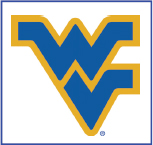Projects with Industry and Building Energy Use
Lead Institution: West Virginia University, Morgantown, WV
Collaborating Institutions: Government agencies, non-profits, industry
Category: Capstone/School-Government partnerships
Date Implemented: 1997
Website: www.mae.cemr.wvu.edu


Program Description: This program is designed as a capstone design experience for senior mechanical engineering students. The projects are supported by the West Virginia Division of Energy with the purpose of helping West Virginia industries, schools, and institutions to become energy efficient and competitive. It is taught each semester and different projects are developed for each class. The class is divided into teams of 4-7 students that focus on a particular industry, county school system, or other institution. The projects deal with a wide variety of topics including energy efficiency, heat recovery, building energy efficiency, manufacturing efficiency, and robotics. In industry projects, the student team goes to the factory or plant to be acquainted with the problem, take measurements, and meet company officials. They often go through safety training at the plant. More than one visit is conducted at the site as the project develops. They will spend the semester developing designs to resolve the task assigned. At the end of the project, they will write a final report which has been edited and corrected and give a final presentation to plant management and engineers. In the Building Energy Use Projects student teams look at all the schools in a West Virginia County and determine their current energy use using utility bills over a two-year period. The schools are benchmarked and compared to other comparable school in a large database. If the schools are at or above the 75th percentile in comparison, the school may be considered an Energy Star school. The student team must study the building and its operation to ensure compliance. The support of the West Virginia Division of Energy has made it possible to go to every corner of the state to perform these projects. The students get to leave the academic environment and be placed in the actual situation where conditions are not always ideal. Several master’s theses have been derived from work on the various projects. These theses have resulted in very beneficial tools being developed for West Virginia schools and industries.
Anticipated and Actual Outcomes: Student outcomes are: (1) using teamwork and previously learned material to apply engineering design principles and related techniques to develop energy-efficient, environmentally friendly solutions for enhancing production; (2) enhancing writing, analyzing, and presenting skills; (3) learning new ideas and what engineers and companies do, equipping them to seek employment among industrial corporations; and (4) becoming a lifelong learner. In addition, the companies and school systems receive valuable information to use in manufacturing and energy efficiency efforts. Many students have reported in exit interviews that this program was the highpoint of their college experience and gave them a real sense of accomplishment. Many realized previously unknown leadership abilities and other talents. Alumni surveys show that this team-oriented design project helps with current jobs. Many companies and school systems have realized millions of energy units in savings, and many companies have hired some of the students in the teams. Some of those students who were hired have brought in new student teams from our program because they realize the value of the program. County School Systems have used the results of the student projects to save energy, certify eligible buildings as Energy Star Buildings, and seek funding for energy renovations.
Assessment Information: The student projects are continually being upgraded and evolved as new technology enters the workplace. New software for modeling is now in use, making the students more valuable to employers as they seek jobs. We are also developing expert systems for use with plants and school buildings to help administrators make the right energy choices. These will be continually upgraded as the program moves on. We also use the feedback we get from companies and school officials to improve the way we conduct the student projects. Assessment is performed by the state agency in three ways. First, quarterly reports are submitted to the West Virginia Division of Energy giving a full account of current and future projects, the number of students involved and the topics of study. Second, when final presentations are given by the student teams at their respective project sites a member of the agency attends the presentation to review the work. Third, every item spent on the operation of the program is reviewed by the agency officials. We perform a self-assessment based on the project results and the feedback obtained from the industrial partners and the school systems.
Funding/Sustainability: Initial funding was approximately $40,000 per year for industrial assistance to West Virginia industries. Some special emphasis was placed on the glass industry in the early years of funding. The project scope has grown to include assistance to buildings and school buildings in particular. The current funding level is $100,000 per year. This money is used for professors’ salaries, graduate assistant salaries, student team travel to the project sites, instrumentation, and computers for the design laboratory in the Engineering Sciences Building. The source of this funding is the West Virginia Development Office and the West Virginia Division of Energy.

